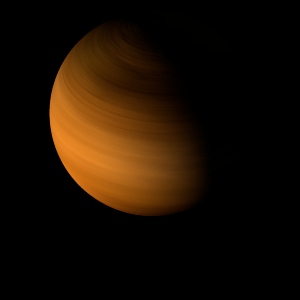|
|
Space Astro
|
Info for exoplanet "Pugaji Hyu"
| Scientific (actual) data |
|---|
| Planet | TOI-1736 b |
| Planet status | Confirmed |
| Planet mass | 0.0374 |
| Radius | 0.2721 |
| Orbital period | 7.07309 |
| Orbit eccentricity | 0.16 |
| Discovered | 2019 |
| Updated | 2023-07-04 |
| Tzero tr | 2459740 |
| Temperature (kelvin) | 1186 |
| Publication | Published in a refereed paper |
| Detection type | Primary Transit |
| Mass detection type | Radial Velocity |
| Radius detection type | Primary Transit |
| Star name | TOI-1736 |
| Right ascension | 43.43° |
| Declination | 69.1° |
| Mag v | 9 |
| Star distance | 88.9482 |
| Star mass | 1 |
| Star radius | 1.408 |
| Star temperature | 5656 |
| Wikipedia article | TOI-1736 b |
Back
| |
| Fictional info (?) |
|---|
| Suggested name | Pugaji Hyu |
| Planet type | Small cold gas planet |
| It is named after the deity Pugaji Hyu, the demon of the underworld.
Its orbital eccentricity is the largest of all known planets in its solar system; at perihelion, Pugaji Hyu's distance from TOI-1736 is only about two-thirds (or 92 pct) of its distance at aphelion.
It has the densest atmosphere of the two small cold gas planets, consisting primarily of neon.
As one of the most noticeable objects in the sky, Pugaji Hyu has been a major factor in native folklore for as long as records have existed.
Plans have been proposed for rovers or more complex missions, but they are hindered by Pugaji Hyu's hazardous precipitation.
Pugaji Hyu has been explored on several occasions by robotic spacecraft, most notably during the early Pioneer and Wayfinder flyby missions and later by the Isaac orbiter. |
| Atmosphere | Neon | 63% |
| Molecular hydrogen | 29% |
| Water vapor | 5.5% |
| Hydrogen peroxide | 1.9% |
| Formaldehyde | 2.6E-5% |
| Atmospheric pressure | 1.4 bar |
 |
| No known satellites |
| Google search for Pugaji hyu |
|
Website by Joachim Michaelis
|
|
|
|